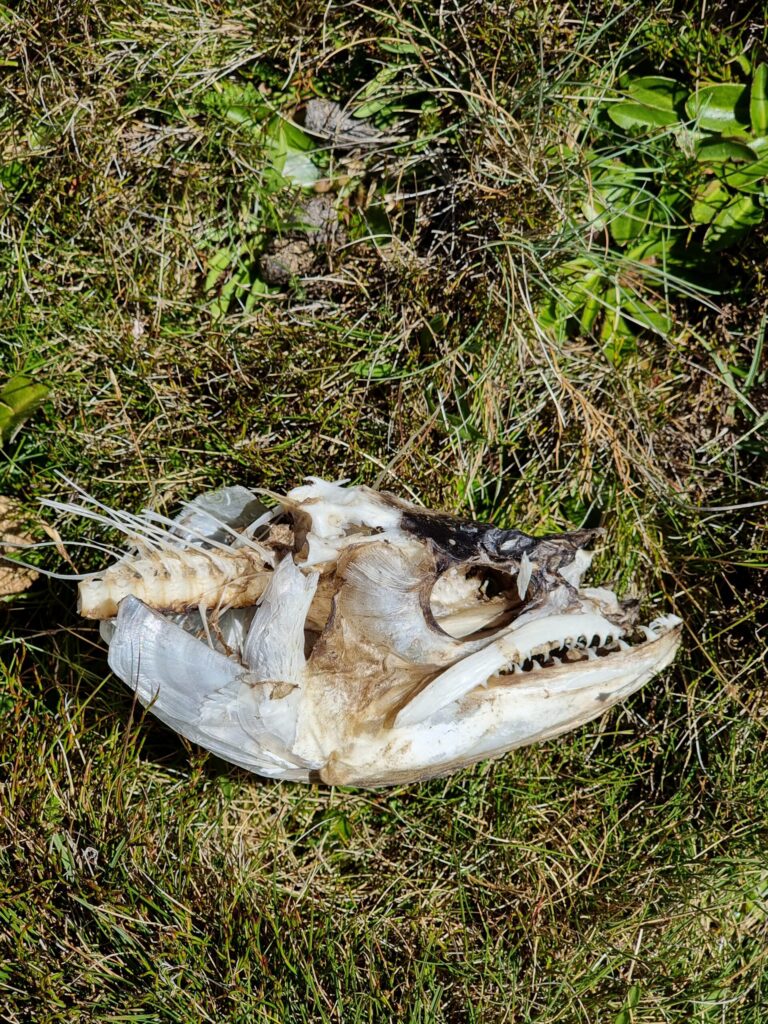As the 23/24 Tasmanian fly fishing season wraps up, there’s no doubt that cormorants combined with drought conditions were the talk of the town. After twenty-odd seasons guiding, including my fourth cormorant / drought combo, here are some observations from my experience, and a bit of science from overseas.
Schooling fish are the giveaway.
It’s not hard to pick a cormorant year; the birds start to appear in late spring, and without much warning there are flocks of dozens, and a large portion of trout showing up with fresh bird-strike scars. At this point in the seasonal cycle though, the full impact on fish stocks is yet to occur.
Moving into summer, and there’s every chance that sections of streams have been pummelled in the early hours of the morning, before you even arrive for the day. What’s the tell tale sign? Schooling fish.
Schooling trout are without doubt the most consistent indicator that a waterway is being predated heavily by multiple birds. Schooled-up fish are invariably impossible to catch, and it is best to move on to an area of the river or lake that has more structure, and calmer fish. In the riverine setting, I like to target sections of stream upstream of schooled-up fish, generally the first location where lots of in-stream structure appears (eg: logjams), or areas with very fast current (the type of current that is almost too hard to directly wade into). This technique brought our guests great sightseeing in late summer. Although we would find a half dozen cormorants per day actively hunting the sections of stream we were in (even regurgitating fresh fish in front of us, which eels would then fight over!), we were still managing more than a dozen takes, mostly sight fishing. For lakes, I like to find weed beds with long vegetation – cormorant wings get caught up in penny weed, ribbon weed and milfoil weed beds, so this is more likely where you’ll find healthy fish, in addition to shallow water (less than 45 centimetres) where depth inhibit the ability of a cormorant to swim.

Dead fish – Western Lakes / Blue Peaks, Tasmania.
What’s the impact of cormorants?
Girth (diameter) of the trout is the controlling factor as to whether a cormorant is able to swallow a fish, or not. For typically conditioned fish I find that a 2lb trout is about the cutoff threshold where the fish becomes too large to be eaten. The only time that this rule doesn’t quite work is during a dry year, where extra pressures such as large fish populations put an increasing strain on available food, and fish condition begins to drop. It is during these periods, which just occurred during 2023/2024, that older fish will quickly slab-off (lose condition), meaning that fish that were previously between 2 and 4lbs quickly revert to a narrow girth body shape (long and skinny), increasing the effect of cormorant predation on the waterway. This classically happened this season in a lot of lower-catchment Western Lake waters around the 19 Lagoons, Christys Creek, Pine River and Blue Peaks. These lakes went in to season 23/24 overpopulated from three wet seasons in a row, and then faced harsh summer drought conditions with an overlay of cormorant predation. The result was a huge plummet in fish stocks caused by cormorants and general stress combined.
How many fish are left?
The most comprehensive research I found comes from cormorant predation research in Denmark, and shows that inland cormorant groups can predate between 30% and 70% of the adult trout population in a given river. This correlates well with my experiences over the past 22 years. Cormorants don’t focus pressure on small fry however, so we have between 30% and 70% of adult trout left, in addition to yearlings, to bring the fishery back. In addition, the significantly reduced fish stocks means that the remaining fish will have ample territory and less competition from other fish, and more access to food even if drought conditions continued into next season. So fish condition will be on the rise now over the next 1-5 years, until the cycle of wet then dry moves through the system again.
What can we do about cormorants?
According to general research across the board, the absolute worst response to a cormorant plague is stocking fish. Stocking counter-intuitively increases and prolongs predation pressure (more feed means the birds hang around for longer), further degrading the fishery for a longer period (as we saw previously on the Meander which was stocked in response to the last cormorant plague last decade). Shooting birds is also shown to make little to no impact on overall numbers or predation pressure, as the vacuum of missing birds is quickly filled, or birds are displaced to other nearby locations where they continue to impact.
Without doubt, the advice of multiple scientific papers is to increase good quality fish habitat. ‘Good quality, accessible habitat is a profound, bottom-up influence that can greatly improve the structure & overall abundance of a fish population’ (Wild Trout Trust, UK). Furthermore, other studies have shown that in general, by increasing in-stream habitat such as logjams and woody debris, undercuts and overhanging vegetation, the overall fish numbers in a stream can be increased, whilst also increasing the overall average weight and quality of the fish.
As per usual in the trout world, habitat is key to a healthy fishery. Other approaches merely target symptoms, rather than causes, and can have the counter-intuitive effect of prolonging and worsening the impacts of cormorants and drought. If you are willing to adapt to the conditions, there is some great fishing to be had, along with the very real chance of excellent young fish in brilliant condition through the coming seasons.
Daniel Hackett, RiverFly 1864
Further reading: https://www.wildtrout.org/assets/reports/Avian-predation_WTT_2020.pdf

A quality late season brown trout, clearly taking advantage of extra food and less competition post-cormorant plague in Tasmania
